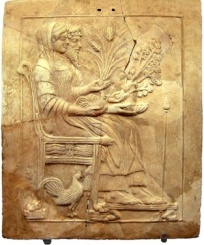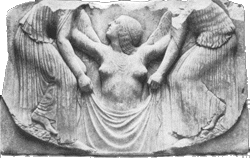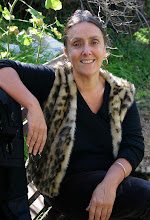Reposted from Feminism and Religion - Exploring the F-word in religion and the intersection between scholarship, activism, and community.
O Madre Nostra Cara by Kaalii Cargill
My historical novel, DAUGHTERS OF TIME, traces a line of mothers and
daughters through 4000 years as they carry the way of the Goddess from
ancient Sumer to the present day. In 1926, a daughter in the lineage is
born in Southern Italy:
“Maria’s family had lived in the village and
surrounding area for longer than anyone could remember. Like all the
girls of her village, she grew up a Catholic, yet on Christmas Eve she
gathered with the other women to perform a ritual in the Church that no
man was allowed to see. The words she spoke would have been familiar to
her many, many times great grandmother, Meh-tan, who once met a Queen in
Ursalimmu.It did not occur to Maria that the ritual was not in
keeping with the teachings of the Church; it was what her mother and
all the mothers before her had done on Christmas Eve to honour the Great
Mother.“
Five years after writing about my fictional Maria, I stood in the
church in Calabria where my grandmother Carmella once met with the other
women on Christmas Eve. And the Great Mother was still there – the
Madonna del Carmine a Varapodio, whom the people call “O Madre nostra
cara.”
The transition from Goddess to Madonna is very tangible in Calabria . . .
Forty kilometres from my grandmother’s town, on the Ionian coast, lie
the ruins of Locri Epizephyrii, one of the most important cities of
Magna Graecia. Excavations have revealed a temple of Aphrodite, a
sanctuary of Persephone, and numerous terracotta plaques and votive
offerings. The famous marble sculpture known as the Ludovisi Throne is
understood to have come from the temple of Aphrodite (Temple of contrada
Marasa) at Locri.


A book called The Locrian Maidens proposes that the
abundance of female dominated iconography and mythology found at Locri
suggests “… a distinct, perhaps even deliberate ‘third way’ in contrast
to the systems of classical Athens and Sparta.”[i] At the heart of this difference was a unique approach to the mythology and rites usually associated with Demeter/Persephone.

At
the core of this difference was a joining together of two Goddesses
usually seen as opposites: Persephone and Aphrodite. In most of the
temples of Magna Graecia, Persephone was represented as daughter of
Demeter and Queen of the Underworld. In this capacity, Persephone
presided over the domain of legitimate marriage and child rearing, while
Aphrodite was more explicitly erotic, presiding over love affairs
outside marriage. The two Goddesses were often represented as opposites:
at around the same time as the temples were being built at Locri,
Hesiod’s poetry depicted Persephone and Aphrodite as rivals, fighting
over a man (Adonis).
 In
many of the Locri images of ritual activities, the symbolism of
Aphrodite and Persephone were represented together: the plaque opposite
shows a girl offering a ball and a rooster to a goddess, “while a goose
flexes its wings beneath the offering table.”[ii]
Roosters were considered chthonic birds, linked to Persephone. Geese
were usually linked to Aphrodite. Here the identity of the goddess is
ambiguous – Persephone or Aphrodite? Or Persephone/Aphrodite?
In
many of the Locri images of ritual activities, the symbolism of
Aphrodite and Persephone were represented together: the plaque opposite
shows a girl offering a ball and a rooster to a goddess, “while a goose
flexes its wings beneath the offering table.”[ii]
Roosters were considered chthonic birds, linked to Persephone. Geese
were usually linked to Aphrodite. Here the identity of the goddess is
ambiguous – Persephone or Aphrodite? Or Persephone/Aphrodite?
This integration of Persephone and Aphrodite – unique to Locri
Epizephrii – suggests an emphasis on initiatory rituals, rites of
passage exploring the intersection of death, sex and transformation. The
transformation of the Kore to Queen of the Underworld was always a part
of the story underlying the Thesmophoria rituals, yet the emphasis was
usually on the Demeter/Persephone cycle of loss and renewal:
Persephone’s descent = Demeter’s mourning and the barrenness of Winter;
Persephone’s return = Demeter’s rejoicing and the renewed fertility of
Spring. In Locri Epizephyrii there appears to have been at least equal
importance placed on Persephone’s initiation as she crossed from Kore
(maiden) to Queen (mature woman).

 The ritual sites at Locri suggest that combined worship of Persephone
and Aphrodite provided a pathway for maturation from girl to woman,
wife, mother, and perhaps hetaira. Consistent with this, there seems to
have been an “absence of discrimination against the prostitute.”[iii] The sides of the Ludovisi Throne show two female figures worshipping the goddess: “on the left side, a naked hetaira plays an aulos,” and in the right, “a heavily draped matron burns incense.”[iv]
The ritual sites at Locri suggest that combined worship of Persephone
and Aphrodite provided a pathway for maturation from girl to woman,
wife, mother, and perhaps hetaira. Consistent with this, there seems to
have been an “absence of discrimination against the prostitute.”[iii] The sides of the Ludovisi Throne show two female figures worshipping the goddess: “on the left side, a naked hetaira plays an aulos,” and in the right, “a heavily draped matron burns incense.”[iv]Perhaps She is both together.

Or perhaps the image shows the initiate transformed, rising between Aphrodite and Persephone, guided and supported by both …
What if the pathway from Kore to Queen, from Maiden to mature Sovereignty involved walking with Persephone and Aphrodite together, making the crossing with their joint blessings? What might come from such an initiation?
I think we might find less rivalry between women, fewer women stuck in over-idealised youthfulness, and more experience of empowerment, choice, and control in women’s relationships with self, others, and the World . . .
Blessed Be!
[i] J. M. Redfield, 2003. The Locrian Maidens. Love and Death in Greek Italy. Princeton and Oxford: Princeton University Press.
[ii] M. B. Skinner. “Nossis and Women’s Cult at Locri.” www.stoa.org/diotima/essays/fc04/Skinner.html. URL accessed 3/9/14
[iii] Ibid.
[iv] Ibid.

